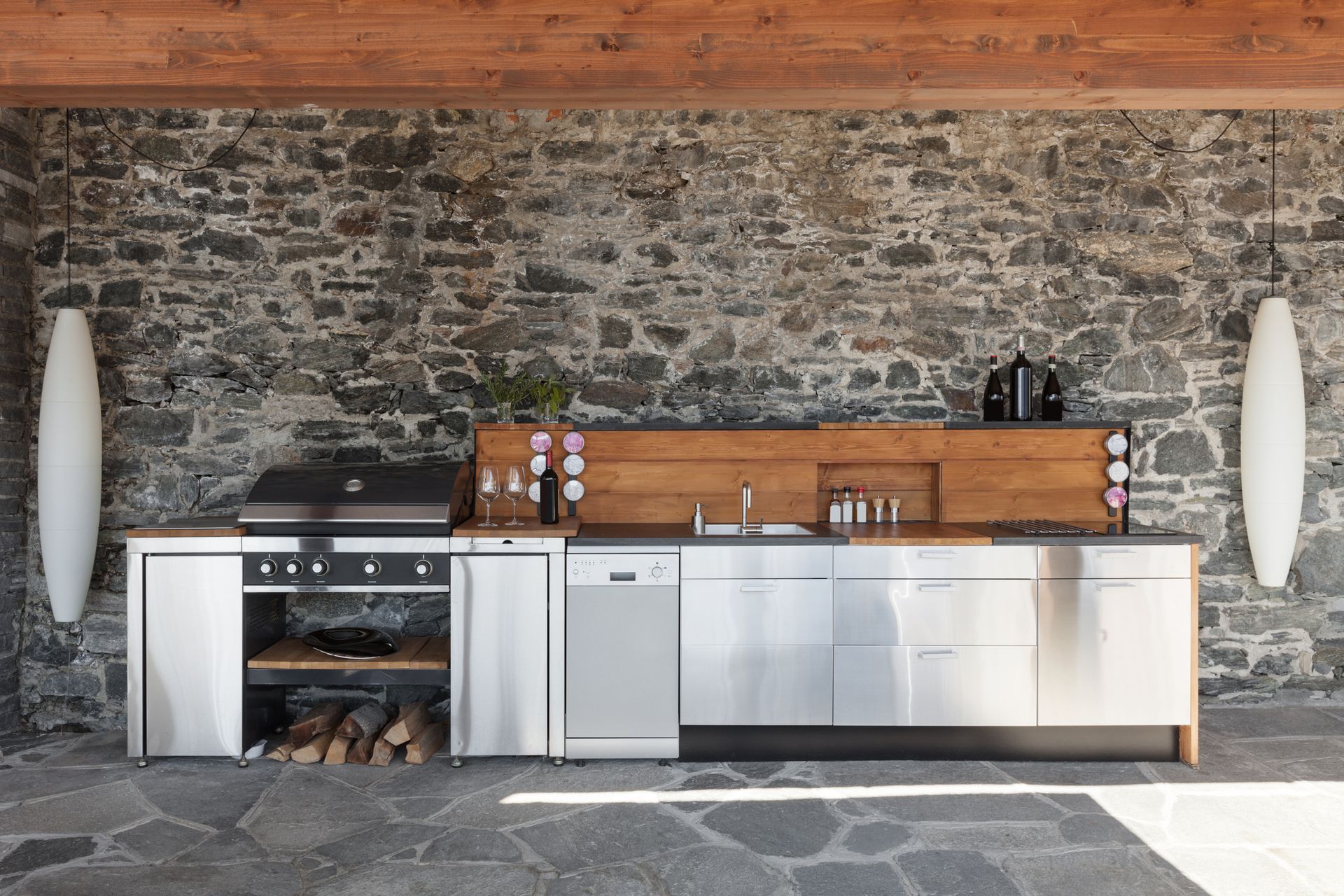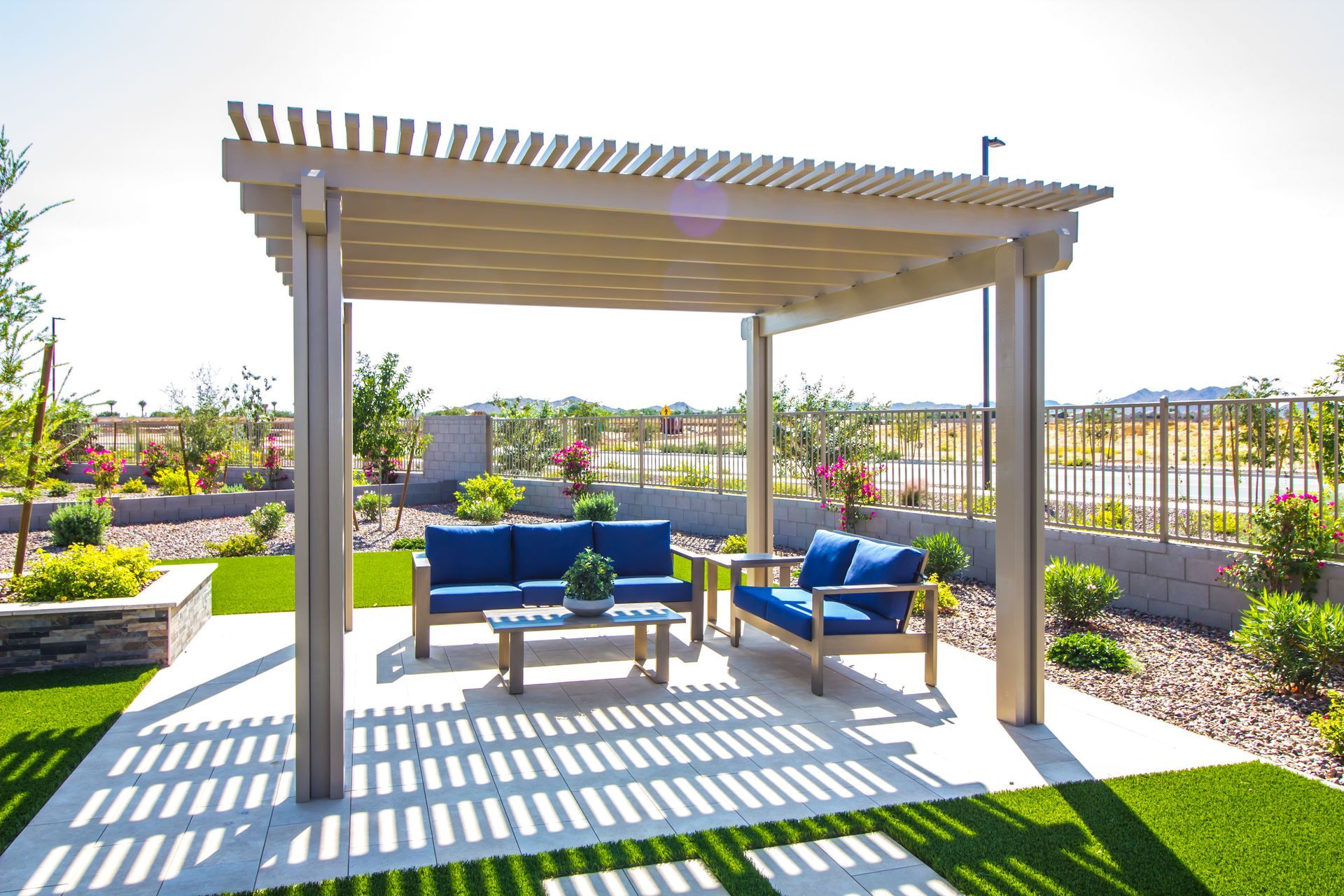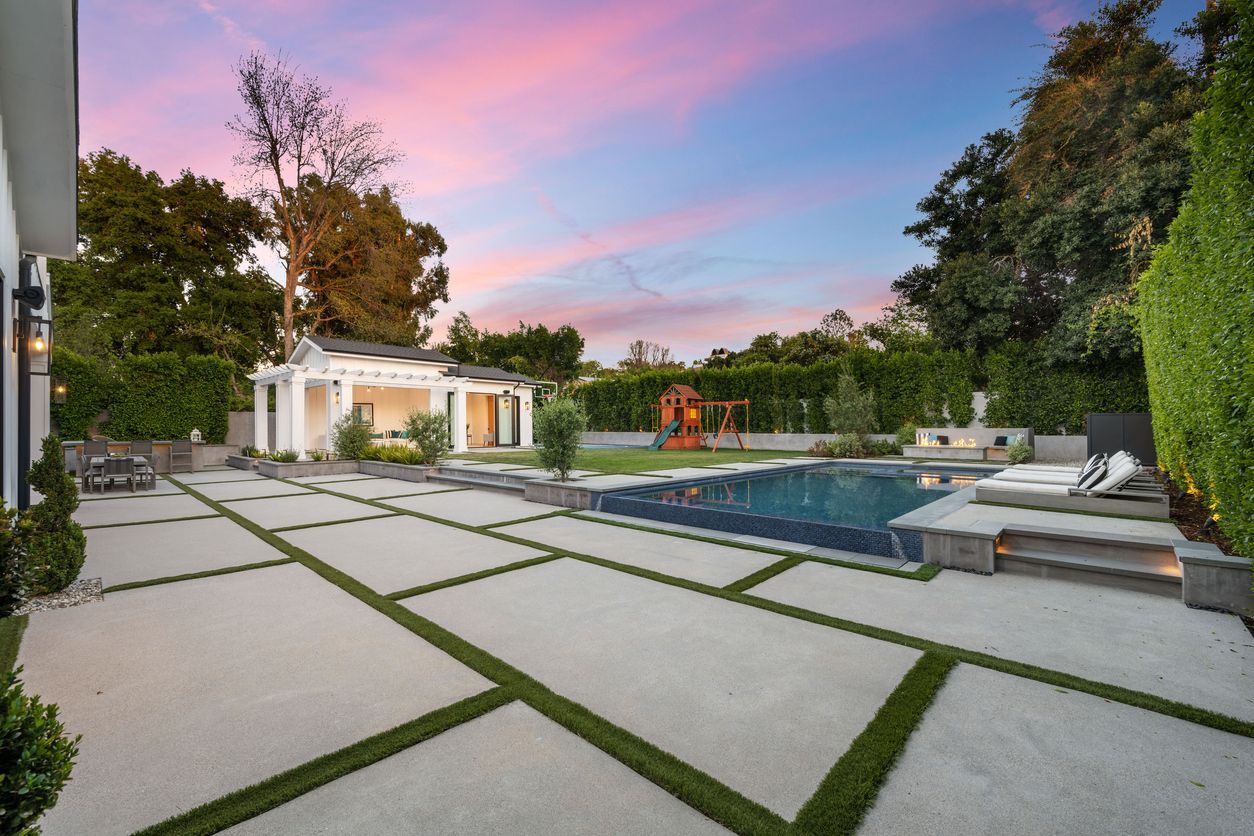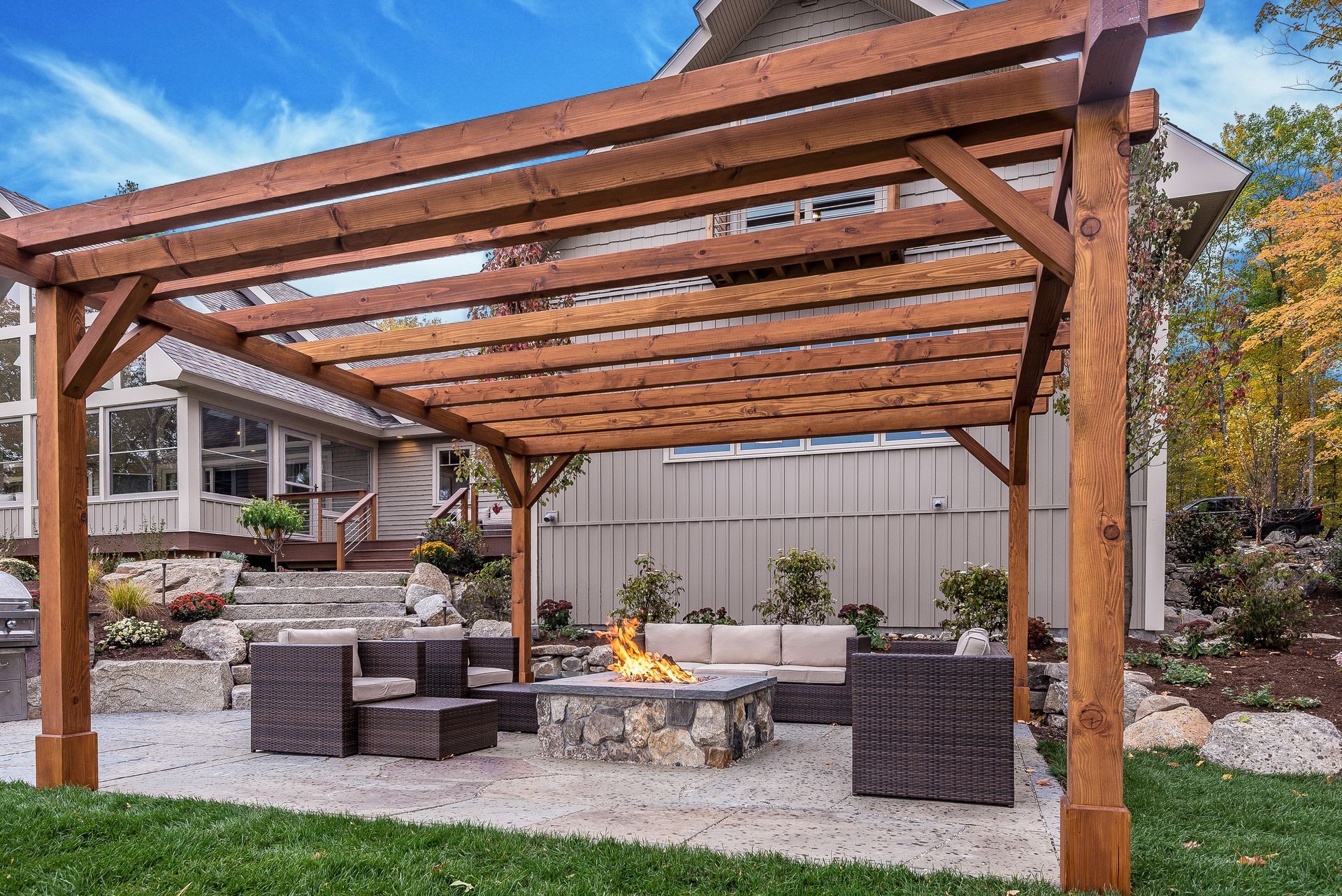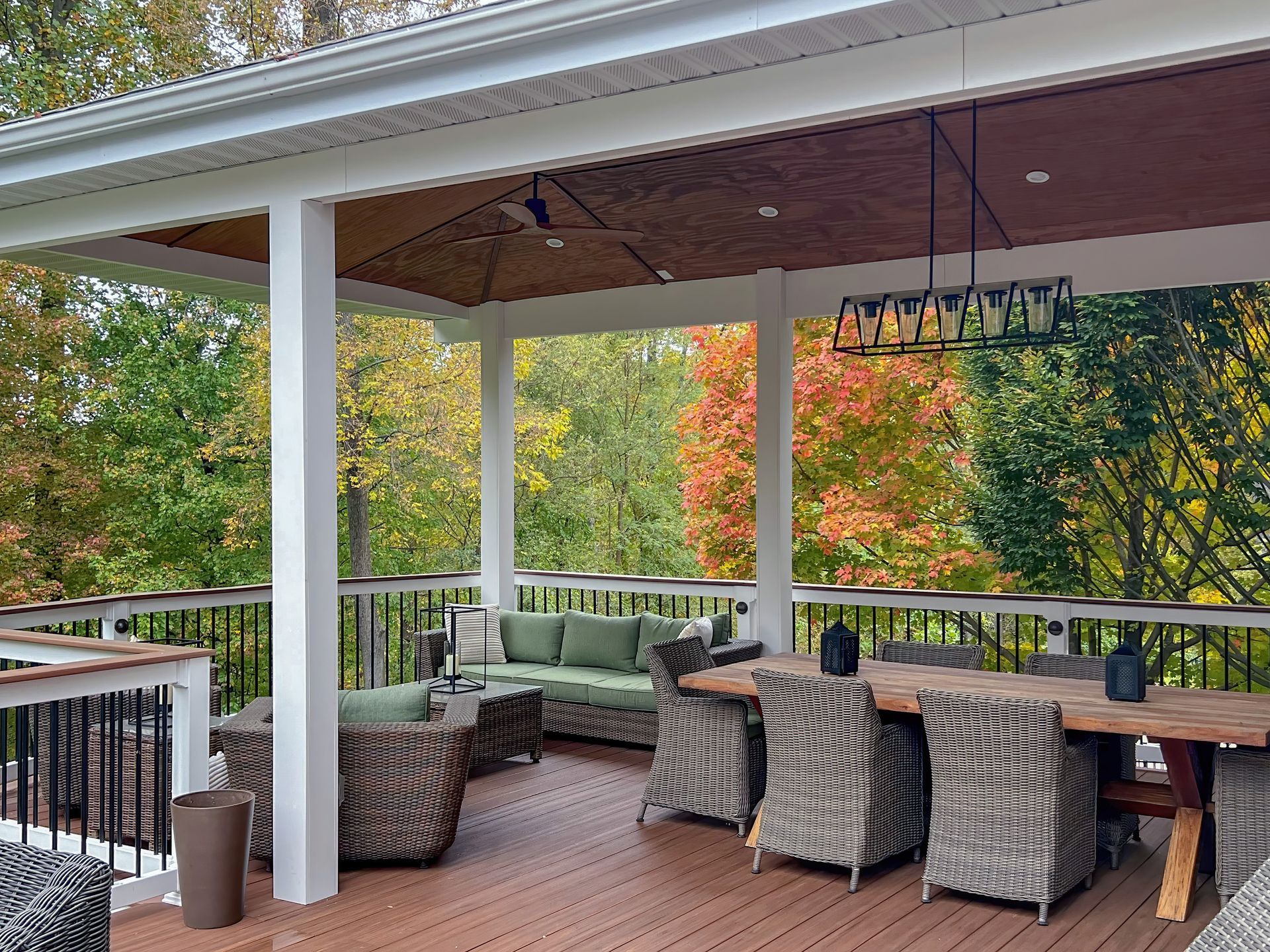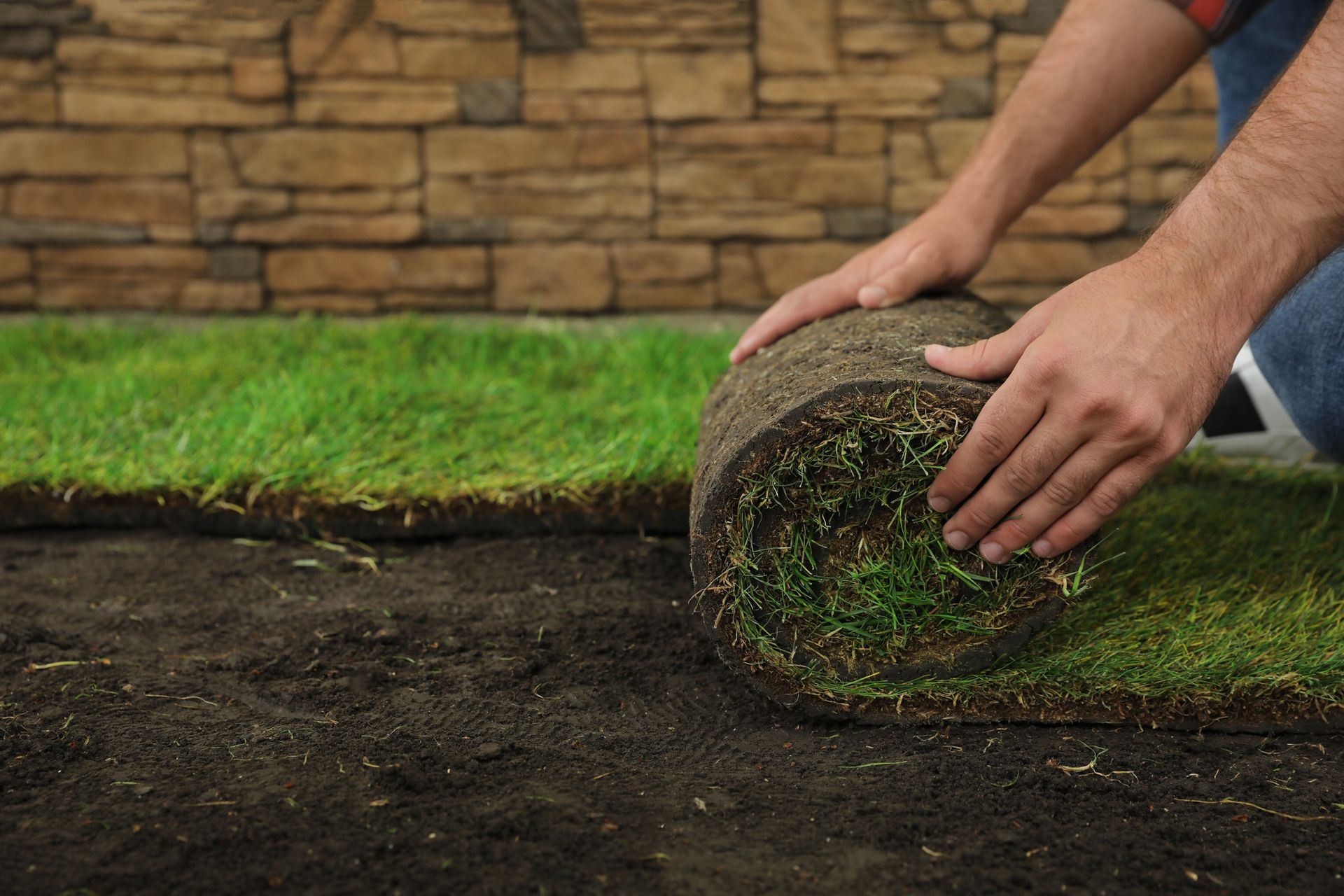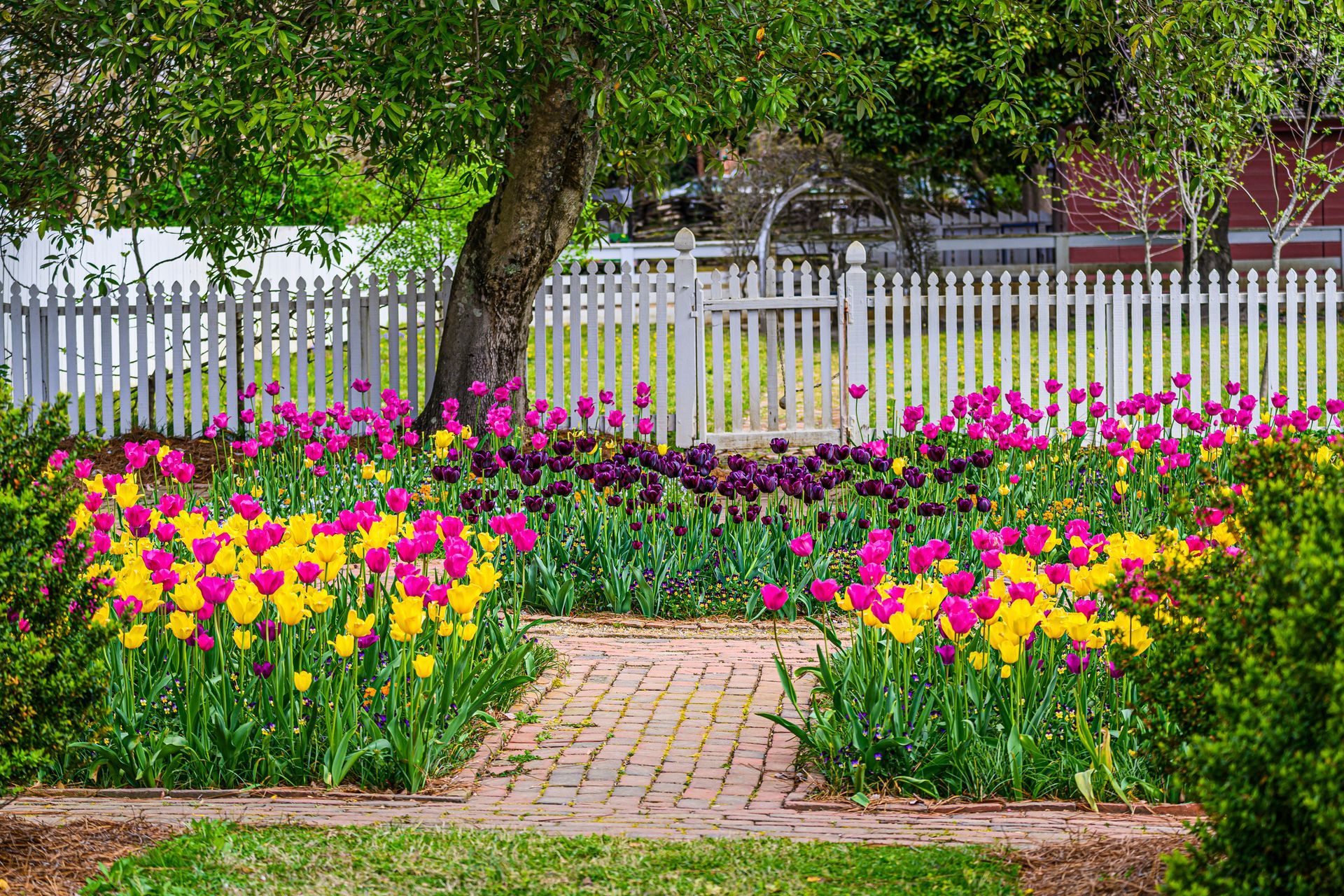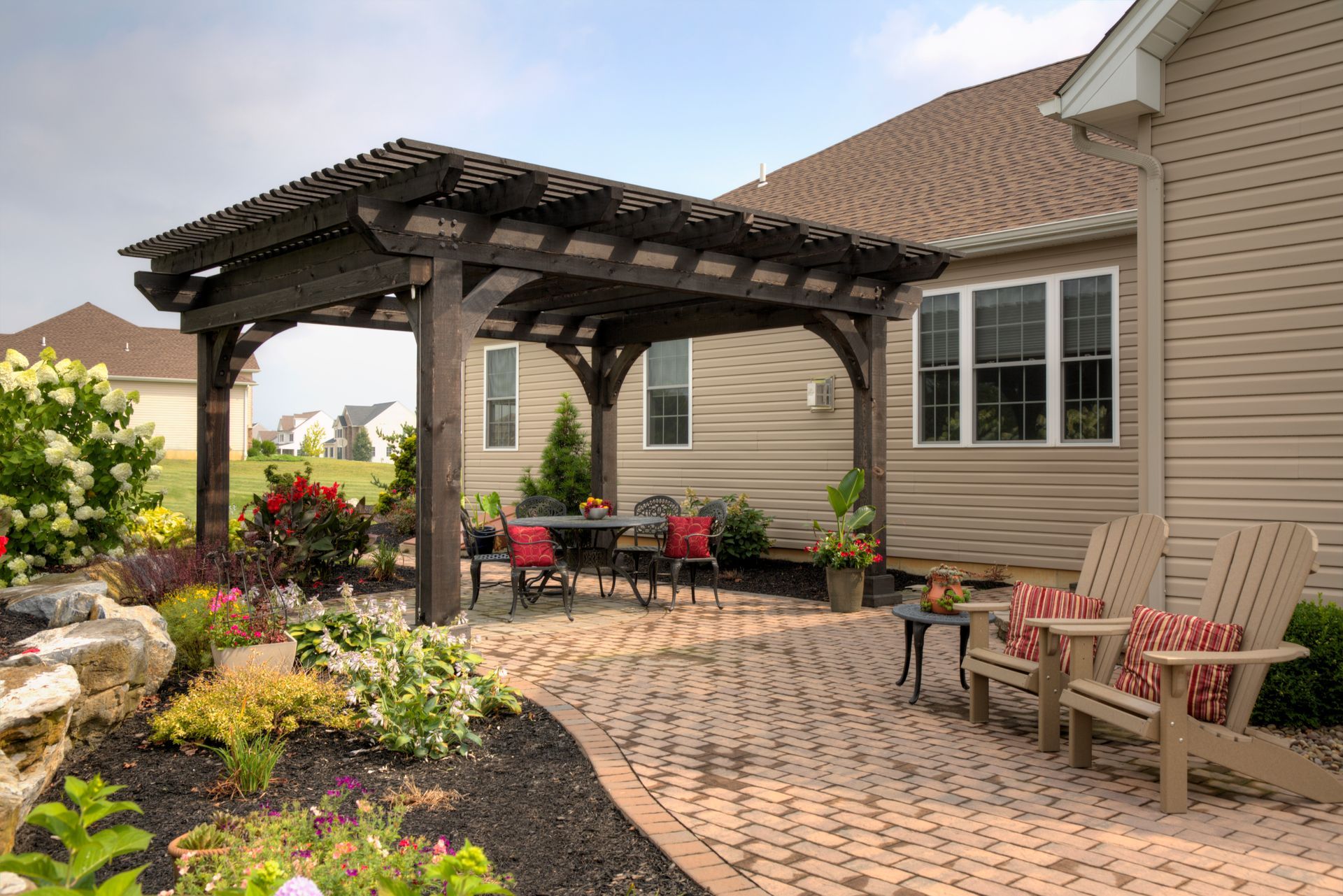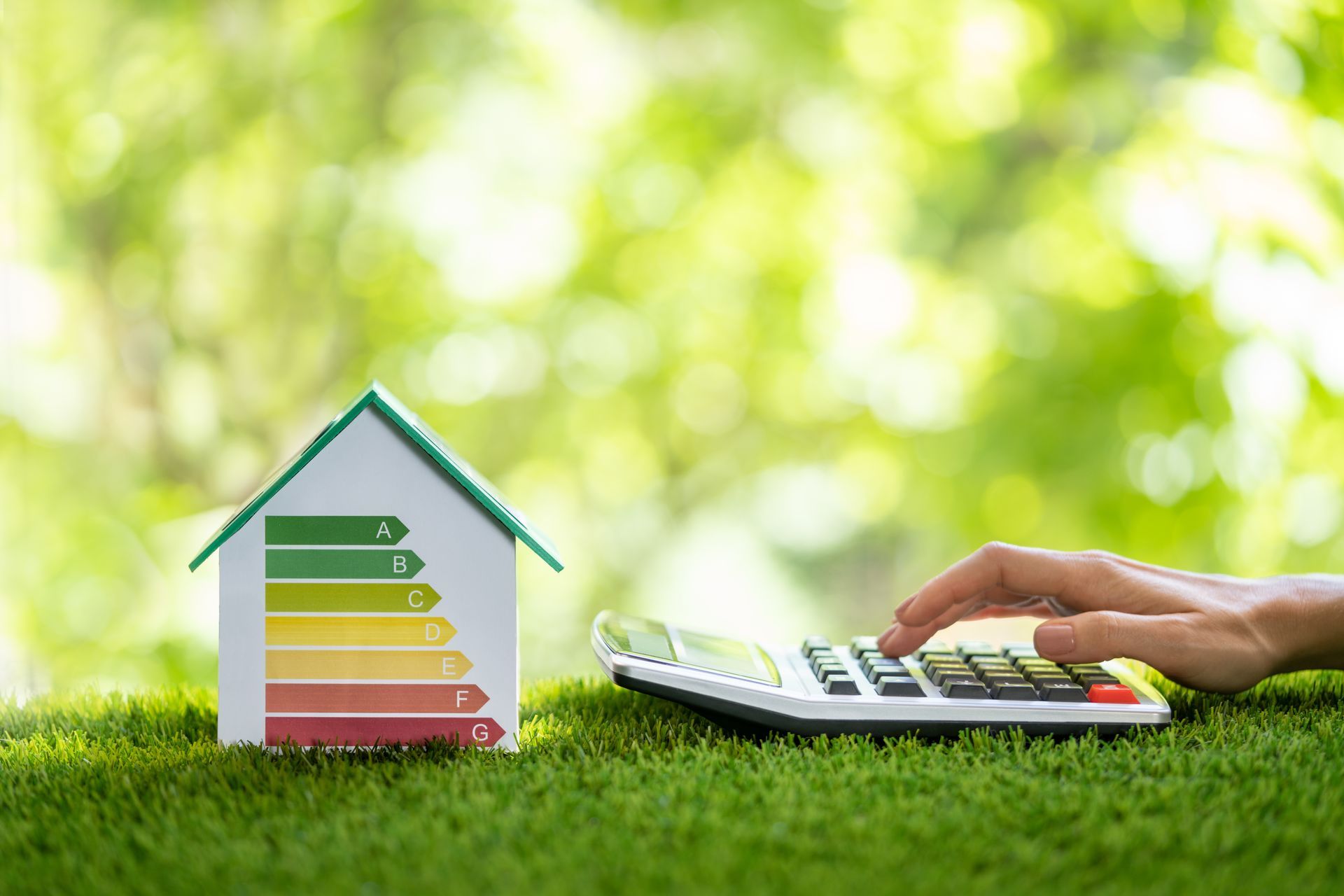At Epperson Landscape, we don’t just build gorgeous patios and stone work — we also specialize in designing and installing custom outdoor fire features. One of the most common questions we hear is: “Should we choose propane or natural gas for the firepit?” Each has pros and cons, and the right choice often depends on your site, usage pattern, and preferences.
Below, we break down the differences — and help guide you to the solution that best suits your outdoor space in Middle Tennessee.
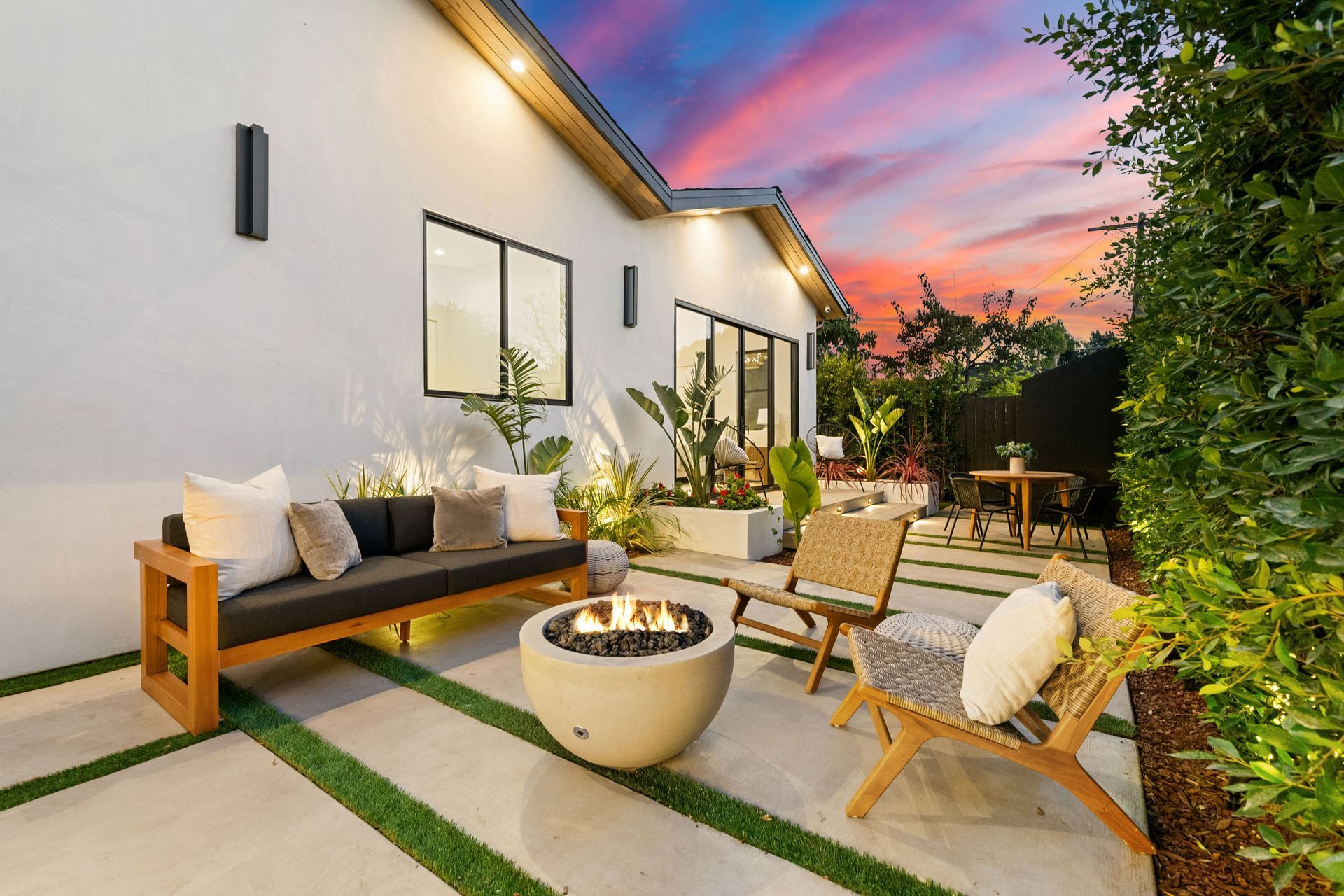
What’s the Difference?
Propane is stored in pressurized tanks (typically above or below ground) and delivers gas under pressure to the burner.
Natural gas is delivered via utility pipelines straight to your property (if available) and is tapped into with gas lines for your firepit.
Pros & Cons: Propane vs Natural Gas
Here’s how they compare across key dimensions:
Propane:
- Easier, since you don’t need to trench a gas line (if a tank is nearby)
- You’ll need to refill or switch out the tank when it runs out
- Propane typically costs more per BTU than natural gas
- Propane burns hotter, delivering a strong flame quickly
- Tank may need concealing (e.g. buried, behind stonework, hidden cabinet)
- Easier to move or relocate (if tank is portable)
- Simpler code requirements in some cases
Natural Gas:
- More work up front — you’ll need to run gas lines, get permits, inspections
- Continuous supply — no worry about running out (assuming your utility gas service is reliable)
- Generally cheaper per hour of burn in many areas
- Slightly cooler flame, but still plenty warm when properly sized
- No visible tank — just lines buried underground
- Firepit is essentially fixed once the gas line is in place
- More regulated, may need inspections, utility approval, setbacks
What’s Best for Your Project?
There’s no one-size-fits-all answer. At Epperson, here’s how we decide:
- Site feasibility: If your home is already connected to natural gas and the firepit site is close to the gas meter, running a line may be cost-effective. If not, propane might be more practical.
- Usage frequency: If you plan to use the firepit often (weekly or seasonally), natural gas’s lower running cost may offset the higher installation cost over time.
- Design priorities: If you want clean lines with no visible tank, natural gas is ideal. If you like flexibility in firepit placement, propane gives you more freedom.
- Budget considerations: Propane often offers lower upfront cost (less trenching, fewer permits), which can help you fit the project into your budget.
- Safety & regulations: Local codes, building permits, inspections, and utility rules can influence the decision. Our team handles all of that — we ensure compliance and safe installation.
How Epperson Landscape Handles Installation
Because we build and install fire features as part of our “Fire Features” service lineup, our process integrates fuel decisions from the start. Here’s how we approach it:
- Consultation & site survey
We visit your property, evaluate where you want the firepit, check for utility access (gas meter, lines), assess grading and drainage, and talk through your design preferences. - Design & fuel recommendation
Based on site constraints and your use goals, we’ll recommend propane, natural gas, or even hybrid setups (e.g. propane backup). We draw up plans that account for burner size, gas line routing, ventilation, safety clearance, and aesthetics. - Permits, inspections & compliance
Our team handles the paperwork — pulling permits, scheduling inspections, coordinating with gas utilities. We ensure the work meets local codes and safety standards. - Installation & finishing touches
- For propane, we set and secure the tank (above or below ground, concealed behind stonework or in a cabinet), run lines to the burner, install the firepit, and integrate it with your hardscape design.
- For
natural gas, we trench and lay the gas line, fit the underground piping, install shutoffs, connections, and then build the firepit shell.
In both cases, we finish with decorative fire media (lava rock, fire glass, etc.), cap stones, coping, and surround elements (seat walls, patios, pavers, etc.). - Testing, education & warranty
We test your firepit thoroughly, teach you how to light and maintain it, and ensure everything works properly. At Epperson, we stand behind our craft — using quality materials and guaranteeing the hardscape where possible
Examples: Choosing One Over the Other
- A homeowner in Brentwood already has natural gas at the house and wants a built-in firepit near their patio — natural gas is often a smart choice.
- Another client in a more remote section of their yard may not have gas nearby — here, propane gives flexibility and less disruption.
- For a design where the firepit is not directly adjacent to the house or meter, sometimes we use a buried propane tank or a hybrid system to combine propane convenience with natural gas aesthetics.
Final Thoughts
Choosing between propane and natural gas comes down to your site, style, budget, and long-term goals. Because Epperson Landscape builds, installs, and integrates fire features into broader outdoor living designs, we can tailor the solution to your property.
If you're considering a firepit or fire feature for your yard, we’d be glad to walk you through both fuel options in the context of your specific site. Contact us for a consultation, and let’s turn your outdoor space into something you’ll enjoy for years to come.
